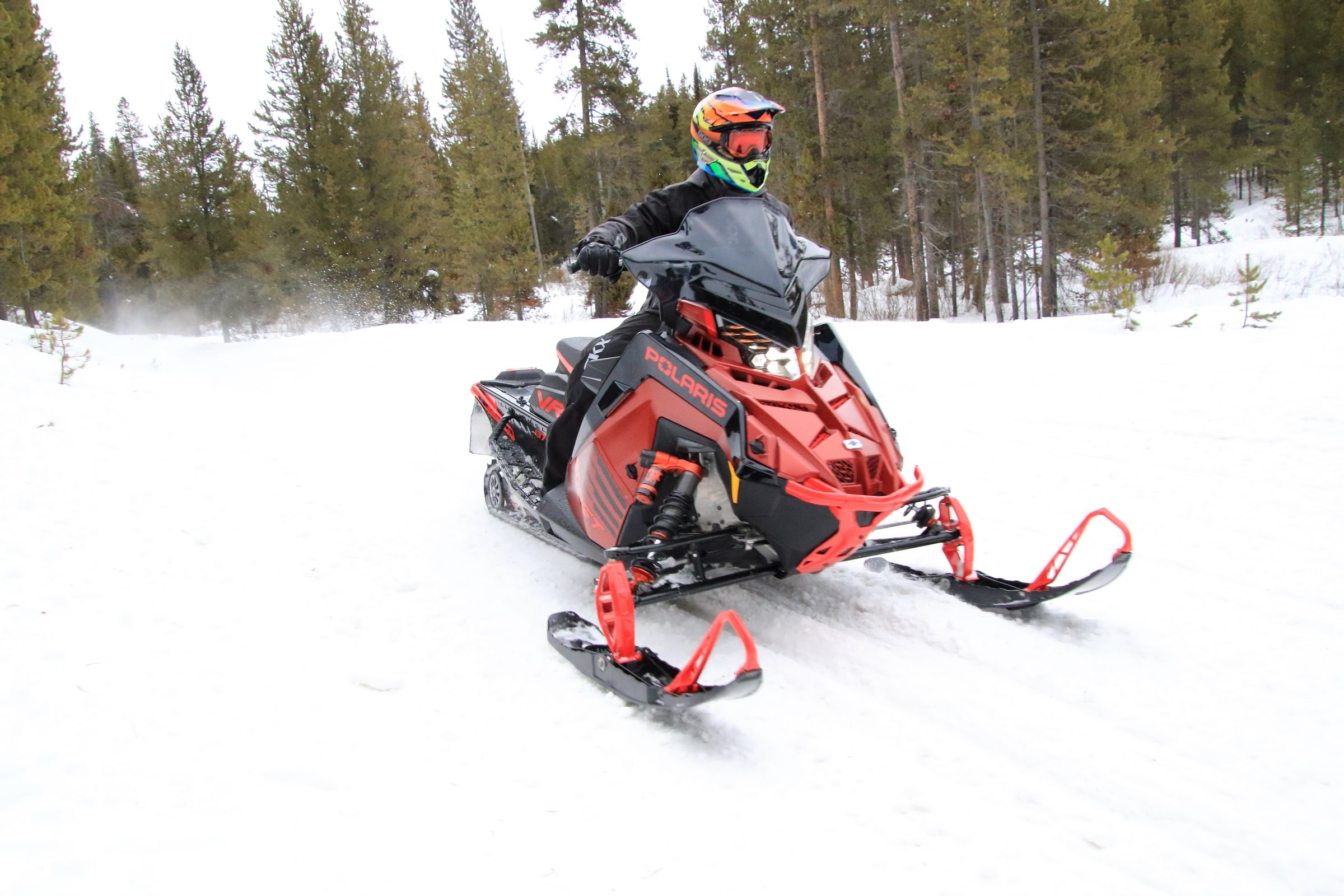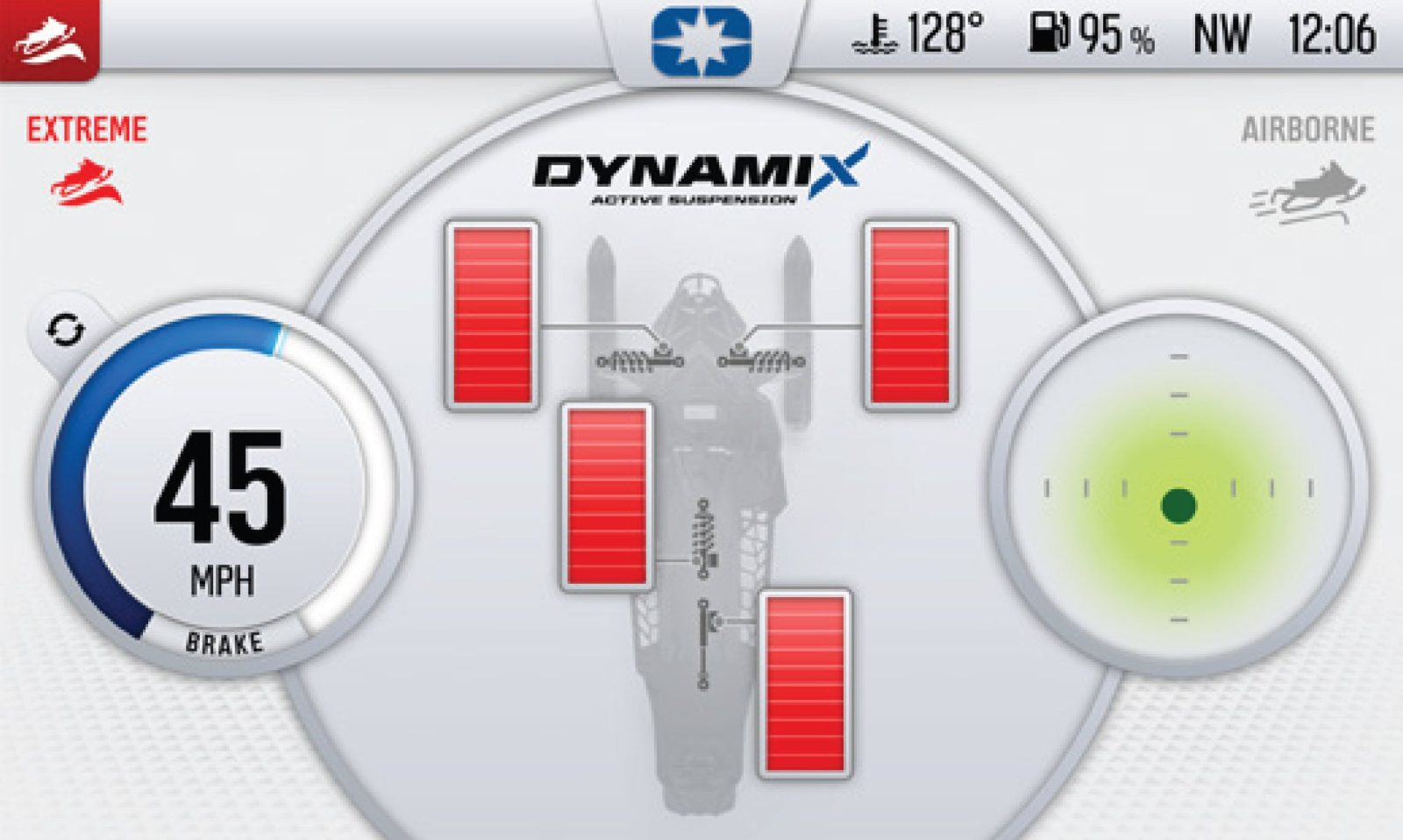Table of contents
TogglePolaris is finally introducing the semi-active Dynamix suspension to its 2025 snowmobile lineup. In this article, I will describe the technology behind this new suspension. Following brief tests during the Snow Shoot, I will also share my initial impressions.
Dynamix Suspension— The Long-Awaited Arrival
Dynamix suspension made its debut in the ATV world in 2018. Initially available only for Polaris’ ultra-sports models, this suspension revolutionized the adrenaline-seeking community. Three years later, Can-Am responded by introducing a similar semi-active suspension: Smart Shox.
The following year, for its 2022 lineup, Ski-Doo adapted this technology to the snowmobile world (read this article). Since then, like many snowmobilers, I’ve been eagerly awaiting the arrival of Dynamix suspension for snowmobiles.
A Different Approach
While Ski-Doo has opted for terrain detection as the primary input, Polaris has taken a completely different approach. Indeed, the Smart Shox suspension analyzes the terrain using sensors at the ski shocks. Adjustment is then made on these two ski shocks as well as the rear track shock.
At Polaris, the patented Inertial Measurement Unit (IMU) is the brain behind Dynamix suspension. It can detect the actual actions of the vehicle. Every movement, including pitch, roll, and inputs, is recorded and interpreted by the IMU. Based on this data, it adjusts the position and compression of the four shocks to ensure optimal handling on snow.
The unique control of the front track shock allows for control of pitch and vehicle balance. This ensures a new level of confidence for the driver on the trail. After being thoroughly tested on the RZR off-road platform, Dynamix has been adapted and redesigned for the snowmobile world. It is the only system in the industry to control all four shocks as well as the main vehicle inputs to maximize bump absorption and optimize snowmobile handling in corners.
Adapting Dynamix to Your Riding Style
Dynamix offers three selectable modes for the driver. They are easily accessible from the switch on the console.
Comfort Mode

Comfort Mode provides the softest suspension for a comfortable ride.
Rally Mode

Rally Mode is designed to deliver the best performance across a wide range of terrains.
Extreme Mode

Extreme Mode is the most aggressive setting, suited for the most challenging terrains.
Detection of Driving Events
The Dynamix system focuses on four key driving events, regardless of the mode selected by the driver. Managing all four shocks during these active events provides an expanded range of suspension capabilities and improved driving performance. This technology is seamlessly integrated into the 7S display powered by Ride Command, showing the current shock position, selected mode, active event, accelerometer data, and other additional information.
Acceleration and Deceleration
The four shocks react and adjust to changes in throttle position and vehicle lean, allowing the vehicle to balance traction and manoeuvrability during acceleration or deceleration.
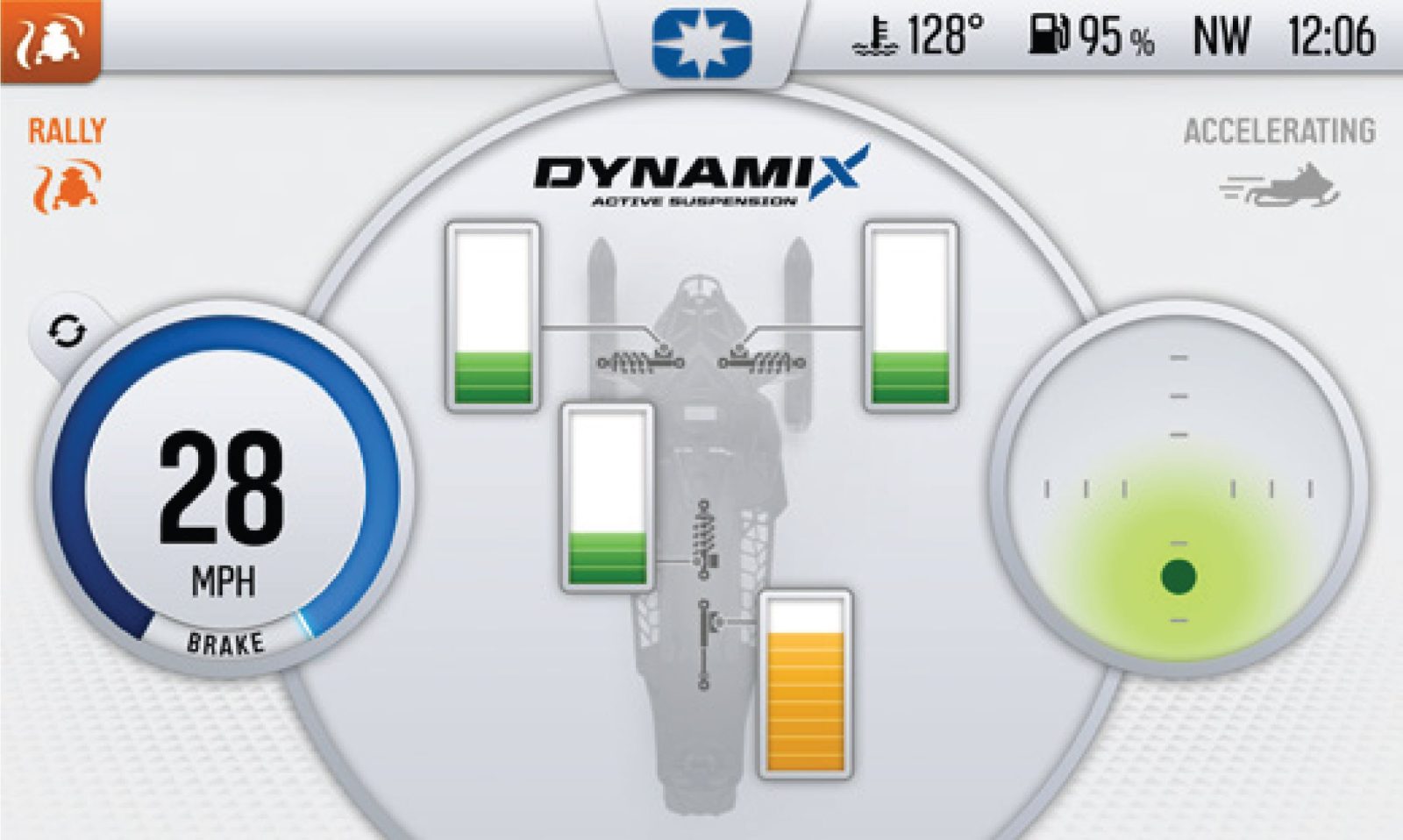
Turning
When the snowmobile enters a turn, the front IFS shocks adjust to keep the snowmobile flat in the turn, while the rear track shock adjusts to maintain traction. Thanks to the unique use of the Dynamix system in the front track shock, the snowmobile’s lean is adjusted to maintain complete balance throughout the turn.
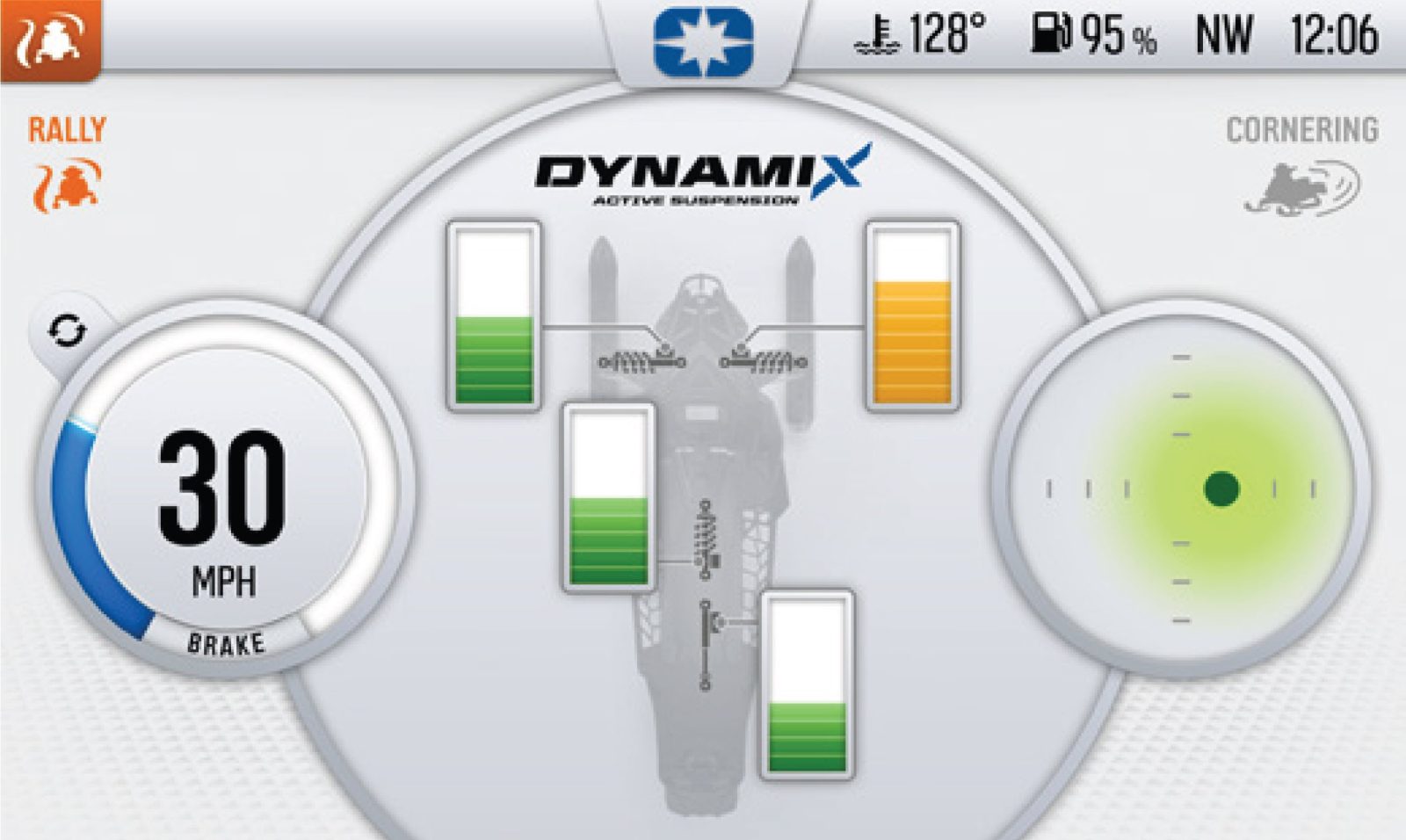
Airborne
When the snowmobile is in the air or unloaded in a deep trough, all four shocks will adjust to maintain complete balance and ensure total control of the snowmobile.
Braking
When the brake is engaged, the IMU takes this input into account along with the pitch and roll of the vehicle to balance the snowmobile, thus ensuring confident traction and direction to enhance braking performance.
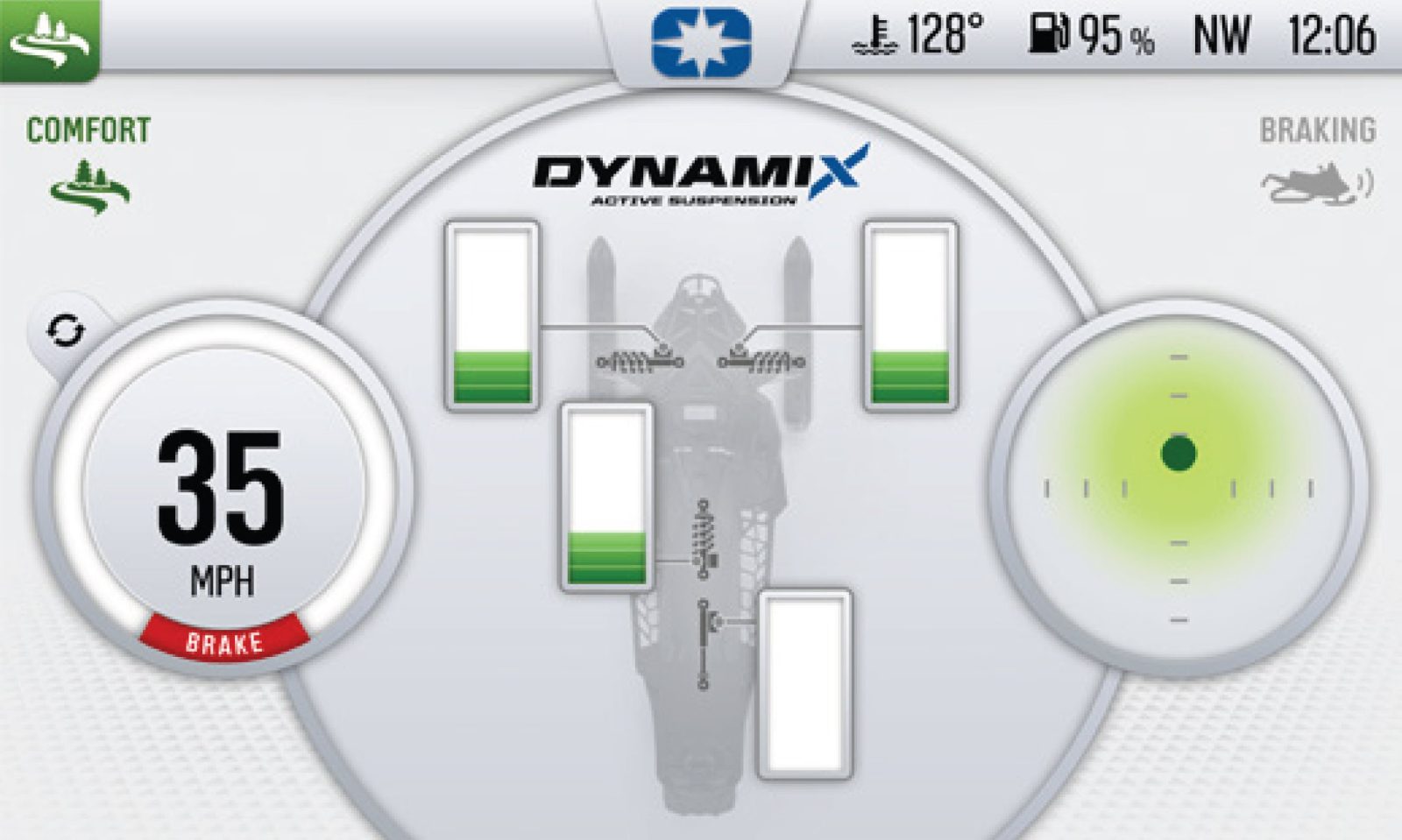
Who Is the Dynamix Suspension For?
If you’re a fan of fast corners, tight winding trails, freshly groomed trails, or trails filled with bumps at the end of the day, the semi-active Dynamix suspension is designed for you. It will continuously adjust all four shocks to maintain total control of the vehicle in all imaginable trail conditions. It will allow you to get the most out of your snowmobile while remaining in full control throughout your rides.
Availability
For 2025, the Dynamix suspension will only be available for the entire INDY VR1 snowmobile lineup. There’s no doubt that in the coming years, it will become accessible for other models.
My First Impressions
During the Snow Shoot, held at the end of February, I had the opportunity to briefly test the Dynamix suspension. I must say it met my expectations well. I tried all three modes, but I kept coming back to the Rally mode, which allowed me to negotiate the trails with ease and comfort.
The Dynamix mode display on the screen provides a good understanding of the work this semi-active suspension does in various situations we encounter.
During strong accelerations, the rear shock becomes firmer. This allows the snowmobile skis to remain in good contact with the trail. This maximizes track traction and snowmobile control in these situations.
In tight turns, it quickly becomes evident that the outer ski shock becomes firmer. This prevents the diving effect typically felt when entering curves quickly. As a result, there’s less understeer since the ski grip on the trail remains optimal.
I also tested hard braking. In this situation, the ski shocks become firmer. This reduces much of the weight transfer to the front. Track traction during this type of braking is assured. The braking distance is thus reduced compared to a snowmobile equipped with standard brakes.
A More Extensive Test Next Winter?
Of course, I’ve already declared my intentions to the folks at Polaris. Therefore, I’ll be putting a Boost INDY VR1 137 with Dynamix suspension right at the top of my wish list!

